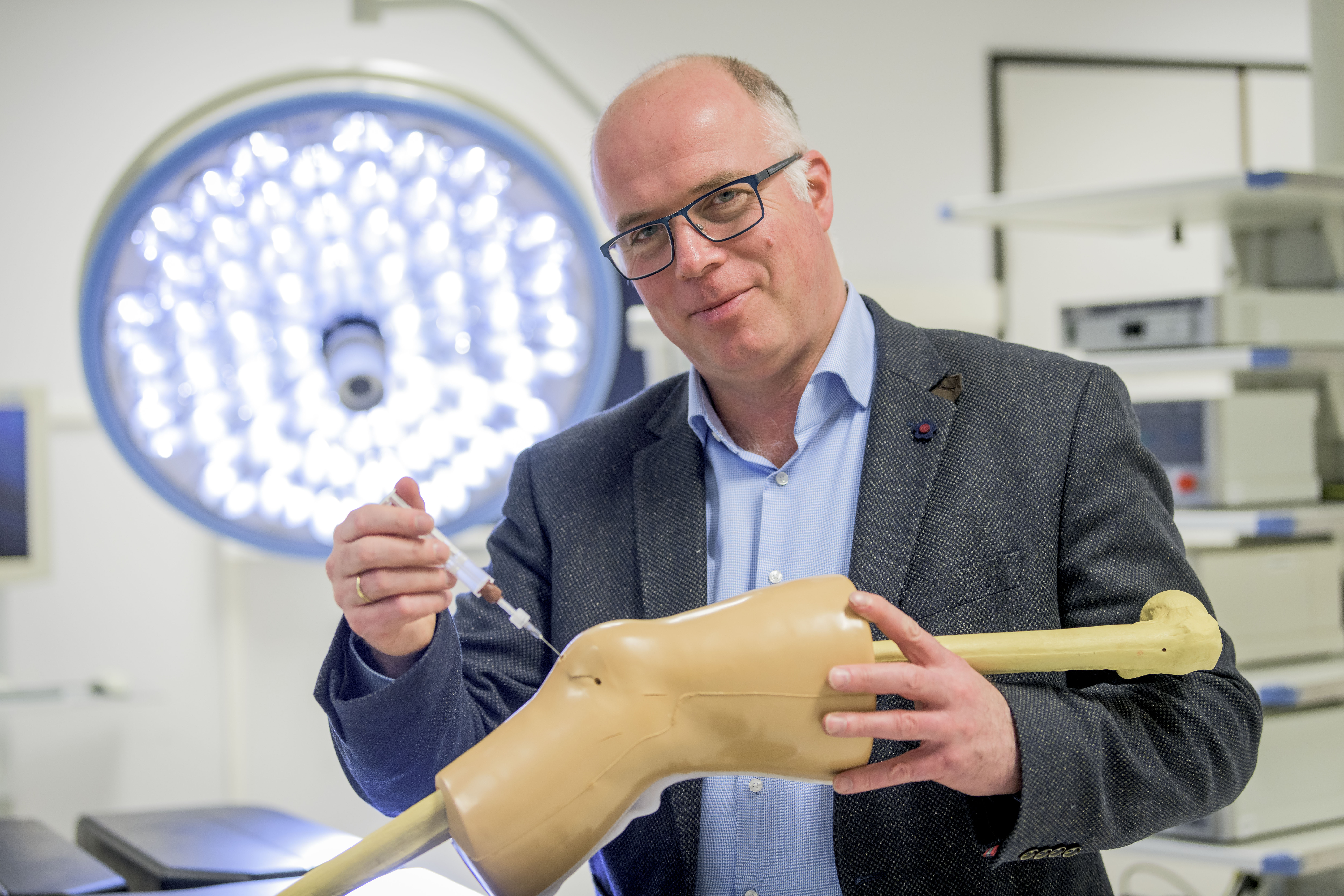
Growth and replacement of damaged cartilage tissue with the help of a groundbreaking 4D printing technology – this is what an interdisciplinary team from the DWI – Leibniz Institute for Interactive Materials and RWTH Aachen University is striving for. The researchers will receive a five-year grant amounting to around 10 million euros from the Werner Siemens Foundation to develop a so-called bio-ink with special properties in the TriggerINK project, writes RWTH Aachen in a press release.
The human body is made up of a myriad of differently structured and sometimes very complex tissues. If these tissues are damaged, medicine faces major challenges in restoring their function. Although there are procedures to repair cartilage in the knee, such interventions do not result in a long-term solution to replace the damaged tissue and regain its function. In addition, several interventions are often necessary as the treatments do not lead to stable, healthy, and functional cartilage.
Alternative technology for tissue replacement
The DWI-RWTH team aims to develop an alternative technology for tissue replacement in the TriggerINK project, which is led by Laura De Laporte, professor of Advanced Materials and Biomedicine, with professors Stefan Hecht (3D printing by light), Andreas Herrmann (drug release by ultrasound), and Matthias Wessling (chemical engineering) completing the team. TriggerINK uses the innovative principle of 4D printing, for which a special bio-ink is being designed. 4D printing is a further development of 3D printing technology: In standard 3D printing, layer by layer of a material is often applied on top of each other, creating a three-dimensional structure – like a cube. “The additional factor that also gives 4D printing its name is ‘time’: we incorporate special components into the ink that react to external stimuli at very specific times. For example, when staying with the cube, movement of the printed material is possible with light and bioactive components can be released on demand with ultrasound,” explains De Laporte.
The team now wants to use TriggerINK to develop a new method for replacing damaged body tissue: by printing 4D structures directly into the affected wound. To test the technology, the researchers have selected cartilage in the knee joint. “We face a variety of challenges in regrowing healthy tissue in damaged areas. For example, the printed material must have a very specific structure comparable to its natural counterpart. It, therefore, contains pores and aligned structures, which are very important to direct infiltrating cells to form tissue that is able to fulfill its function and – in the case of the knee joint – withstand pressure or friction stress,” explains Professor Matthias Wessling. His research focuses, among other things, on the process engineering requirements for the printing of ordered structures.
Bio-Ink properties come to light
The idea of TriggerINK involves steps that flow smoothly into one another during the printing process. In the process, various properties of the bio-ink come to light: “The aim is to print the bio-ink layer conscientiously into the wound. It contains various ingredients that react to irradiation with light, for example. In this way, cross-links are created during the printing process that form a support framework and pores,” explains Hecht, in whose laboratories such special light-sensitive building blocks are developed. “We are striving to develop a medical product – which means that the perspective of users from the clinic is also indispensable for us. Therefore, we are also accompanied and advised by prominent colleagues from medicine and molecular cell biology,” says Professor Stefan Hecht.
For the ink, the team will use a technology that Laura De Laporte has developed and patented: ANISOGEL for the guided growth of nerve cells. Furthermore, the bio-ink will contain encapsulated growth factors and immune-modulating agents. “These can be released when required by ultrasound and are thus intended to support the healing process,” explains Professor Andreas Herrmann. He is specialized in alternative systems for drug release and delivery.

Selected for you!
Innovation Origins is the European platform for innovation news. In addition to the many reports from our own editors in 15 European countries, we select the most important press releases from reliable sources. This way you can stay up to date on what is happening in the world of innovation. Are you or do you know an organization that should not be missing from our list of selected sources? Then report to our editorial team.







